Plan your Japan trip without
the overwhelm
Ema in Japan: What Are These Wooden Wish Plaques and How to Use Them?

If you’ve ever walked through a Japanese shrine and noticed rows of small wooden boards covered in handwritten messages, you’ve seen ema (絵馬) a beautiful tradition where people leave their wishes for the gods.
But what are ema exactly, and how can you use them during your trip to Japan?
🎴 What is an Ema?
Ema are small wooden plaques available at Shinto shrines and Buddhist temples all across Japan. The word literally means “picture of a horse”, because in ancient times, people would offer horses to the gods as a sign of gratitude or to ask for a blessing.
Today, instead of real horses, visitors write their wishes on wooden plaques and hang them at the shrine—hoping the kami (gods) or Buddhist figures will grant their prayer.
✍️ What Do People Write on Ema?
You can write anything that matters to you—there are no strict rules. Common topics include:
🎓 Success in exams and studies
💼 Career and prosperity
❤️ Love and relationships
🧘♀️ Health and protection
✈️ Safe travels
🌠 Personal dreams, goals, and affirmations
Most people also write their name and date, but it’s optional. Some messages are short (“I want to pass my entrance exam”), others more detailed or poetic.
🧾 How to Use an Ema (Step by Step)
Here’s how to join this powerful tradition:
1. Buy an ema
They’re sold at most shrine/temple souvenir stands, costing around 500–1,000 yen.
2. Write your wish
Use the pens or markers provided. Write on the blank side of the plaque.
3. Hang your ema
There’s always a wooden rack nearby—just tie yours among the others.
4. Bow or say a silent prayer (optional)
Many people quietly bow or take a moment to connect with their wish.
🎨 Ema Designs and Their Meanings
Each shrine has its own unique ema artwork—often linked to what people wish for there.
Here are some popular motifs:
🐉 Animals – Zodiac animals, cranes (long life), foxes (Fushimi Inari)
💘 Hearts and couples – Found at love shrines like Kiyomizu-dera
⛩ Torii and deities – Representing the connection to the divine
🌸 Nature or seasonal symbols – Reflecting peace and cycles
Many places also offer specialty ema for specific types of wishes: love, studies, health, etc.
🧘 Final Thoughts
Ema are much more than pretty souvenirs—they’re a powerful way to engage with Japan’s spiritual traditions.
Whether you’re asking for something big or just setting an intention for your trip, taking a moment to write and hang your ema is a beautiful pause in the middle of your journey.
Next time you visit a shrine, give it a try—you never know who’s listening 🌸✨
💼 Why Choose My Ready-to-Go Itineraries?
Planning a Japan trip can get overwhelming. I lived in Japan and built the kind of guide I wish I had at the beginning. Here’s what you get:
✅ Clear day-by-day routes 100% customizable
✅ Local spots, not just the touristy ones
✅ Interactive map & Direct Google Maps links
✅ Tips on transport, food, and stays
✅ Works offline. Saves you 100+ hours of research
💌 Get Your Japan Itinerary Now Travel Japan with clarity. No stress. No chaos. Just the adventure, made easy.

Marie creator behind @Tabimawari
Hi, I’m Marie.
French islander from Reunion island, Japan lover, and travel planner behind Tabimawari.
I spent a year living in Kyoto, learning Japanese and falling in love with the culture. Since then, I’ve kept going back, exploring every corner from Tokyo to the tiniest hidden towns.
I created these guides after spending months planning, testing, and fine-tuning every detail so you don’t have to. Inside, you’ll find:
✅ Interactive maps
✅ Step-by-step directions
✅ Local spots + travel tips
✅ Offline use
Each guide is made with care, based on real-life travel, not generic blog advice.
This is what I wish I had on my first trip to Japan and now it’s yours.
MY SOCIALS
MY NEWSLETTER
Japan Monthly by Tabimawari : Subscribe to get a monthly email packed with inspiration, local tips, and events happening across Japan straight from someone who’s lived and traveled a lot.

Marie creator behind @Tabimawari
Hi, I’m Marie.
French islander from Reunion island, Japan lover, and travel planner behind Tabimawari.
I spent a year living in Kyoto, learning Japanese and falling in love with the culture. Since then, I’ve kept going back, exploring every corner from Tokyo to the tiniest hidden towns.
I created these guides after spending months planning, testing, and fine-tuning every detail so you don’t have to. Inside, you’ll find:
✅ Interactive maps
✅ Step-by-step directions
✅ Local spots + travel tips
✅ Offline use
Each guide is made with care, based on real-life travel, not generic blog advice.
This is what I wish I had on my first trip to Japan and now it’s yours.
MY SOCIALS
MY NEWSLETTER

Plan your Japan trip without
the overwhelm
Follow me
Newsletter
Japan Monthly : Subscribe to get a monthly email packed with inspiration, local tips, and events happening across Japan straight from someone who’s lived and traveled a lot.


